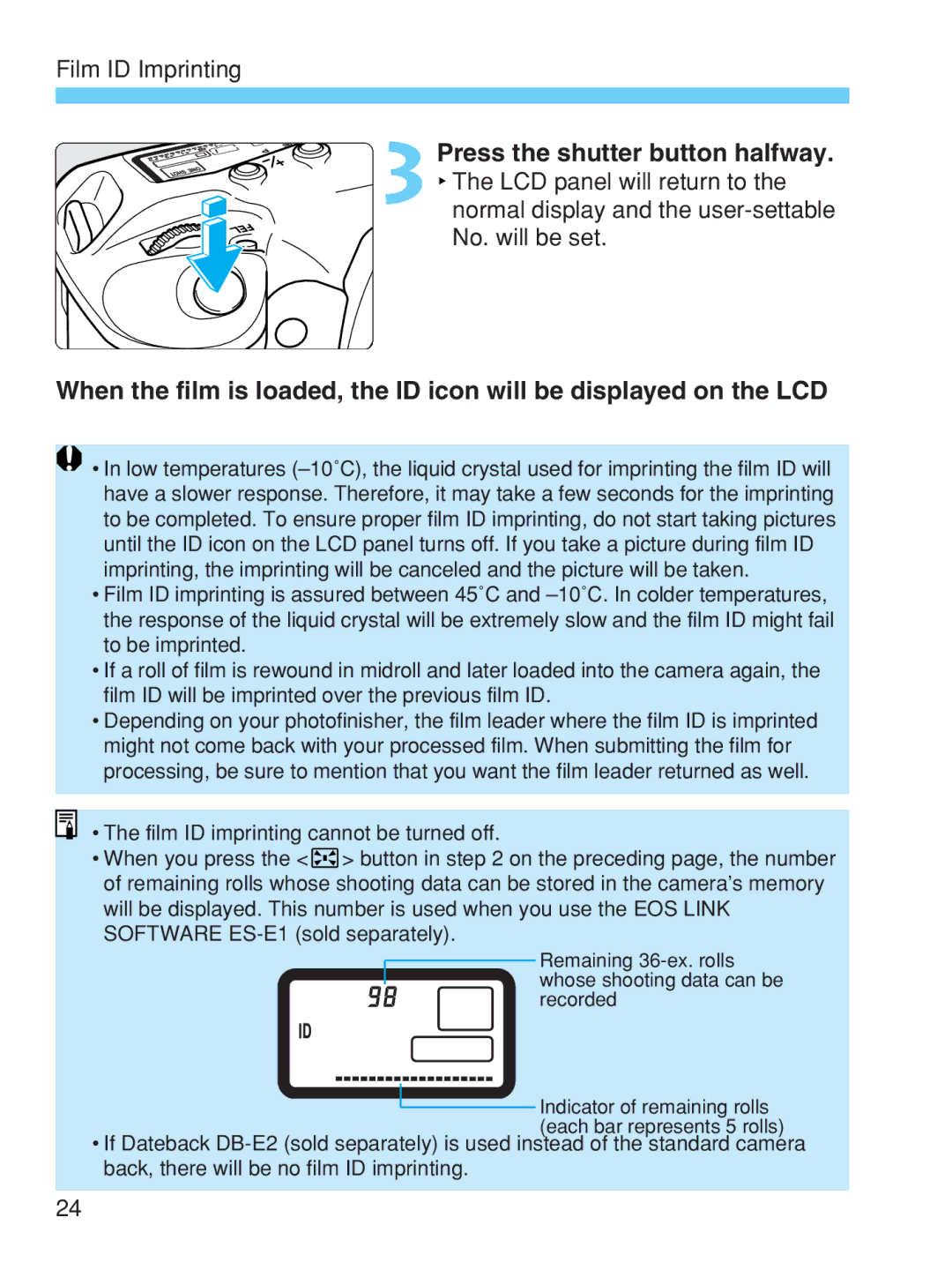
Film ID Imprinting
3 Press the shutter button halfway.
![]() The LCD panel will return to the normal display and the
The LCD panel will return to the normal display and the
When the film is loaded, the ID icon will be displayed on the LCD
![]() • In low temperatures
• In low temperatures
•Film ID imprinting is assured between 45˚C and
•If a roll of film is rewound in midroll and later loaded into the camera again, the film ID will be imprinted over the previous film ID.
•Depending on your photofinisher, the film leader where the film ID is imprinted might not come back with your processed film. When submitting the film for processing, be sure to mention that you want the film leader returned as well.
• The film ID imprinting cannot be turned off.
•When you press the < ![]() > button in step 2 on the preceding page, the number of remaining rolls whose shooting data can be stored in the camera’s memory will be displayed. This number is used when you use the EOS LINK SOFTWARE
> button in step 2 on the preceding page, the number of remaining rolls whose shooting data can be stored in the camera’s memory will be displayed. This number is used when you use the EOS LINK SOFTWARE
Remaining
![]() Indicator of remaining rolls (each bar represents 5 rolls)
Indicator of remaining rolls (each bar represents 5 rolls)
•If Dateback
24
